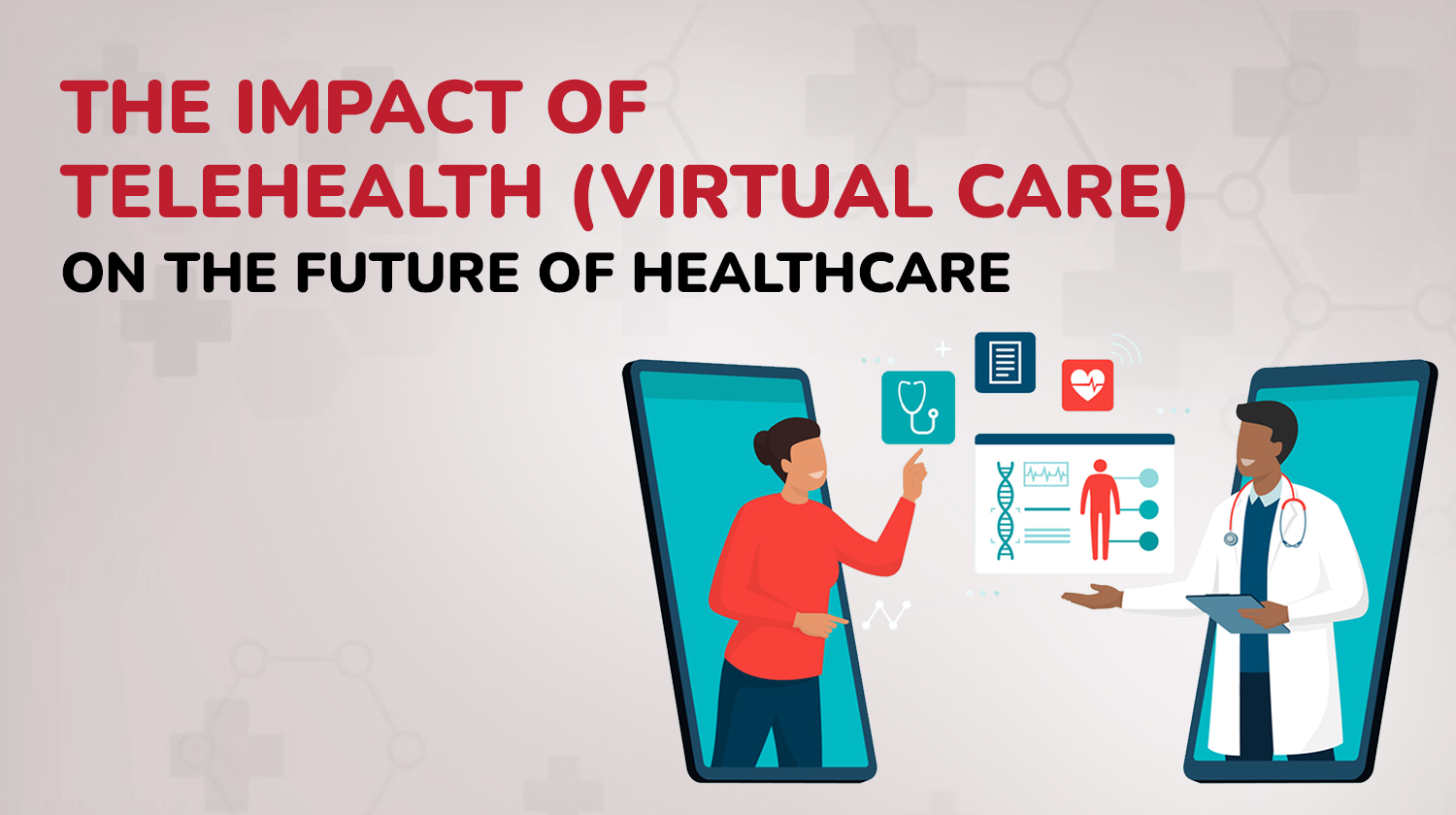
As recent events have shown, telehealth is becoming essential to the future delivery of healthcare. With telehealth, you can access medical care from the convenience of your home while still receiving quality care from your physician. At just 100 words, this introduction merely touches the surface of how virtual care is revolutionizing patient access. Read on as we explore the growing role of telehealth and predict how it may transform healthcare delivery going forward.
The Rise of Telehealth During the COVID-19 Pandemic
The COVID-19 public health emergency has accelerated the adoption of telehealth services. As social distancing measures were put in place, in-person doctor visits declined rapidly. Telehealth, also known as virtual care, emerged as a viable and safe way for patients to access healthcare from home.
Telehealth refers to the use of digital communication technologies to deliver health services and transmit health information remotely. Patients can connect with healthcare providers for a range of basic medical services via phone, video conferencing, and mobile apps. Telehealth includes services such as virtual checkups, e-prescriptions, online therapy and counselling, and remote patient monitoring.
Before the pandemic, telehealth was growing at a steady but slow rate due to regulatory, technological and cultural barriers. However, COVID-19 has fueled the rapid expansion of telehealth. According to surveys, more than 75% of U.S. consumers have used telehealth during the pandemic. Healthcare systems and providers have also scaled their telehealth programs to divert patients from emergency rooms and safely provide essential care.
The increased adoption of telehealth is transforming healthcare delivery in several ways:
• Improved access to care. Telehealth reduces barriers like transportation and enables patients in remote or underserved areas to access medical expertise. This helps address healthcare disparities and improves population health outcomes.
Enhanced patient experience. The convenience of telehealth appointments and
virtual waiting rooms leads to higher patient satisfaction. Patients also feel more engaged and empowered in their care.
• Reduced costs. Telehealth decreases overhead costs for providers and facilities. It also reduces costs for patients and payers associated with unnecessary emergency room visits and medical transportation.
• Improved care coordination. Telehealth facilitates collaboration between primary care doctors, specialists, therapists, and other providers. This leads to better health outcomes, especially for patients with chronic or complex conditions requiring coordinated care.
While telehealth will not completely replace in-person care, it is poised to become a permanent and vital part of healthcare delivery. Widespread adoption of telehealth will continue to expand access, reduce costs, and transform the patient experience.
Benefits of Telehealth for Patients and Providers
Telehealth, also known as virtual care, provides significant benefits for both patients and healthcare providers. For patients, telehealth improves access to care by eliminating geographic barriers and enabling care from home. Patients in rural areas can connect with specialists located far away. Those with limited mobility or lack of transportation options can receive care remotely.
Convenience and Reduced Wait Times
Telehealth visits can save patients time and hassle by avoiding travel to a healthcare facility. Appointments may have less wait time. Patients can connect with their doctor directly through video conference at the scheduled time.
Continuity of Care
Telehealth enables patients to keep following up with the same provider they have an established relationship with, even if the patient moves to a new location. Patients who seasonally migrate can stay under the care of their usual physician.
For providers, telehealth improves efficiency, expands their reach, and enhances work-life balance.
Improved Efficiency
Less time is spent on administrative tasks like rooming patients. The virtual visit format reduces no-shows since patients don’t have to commute to their appointments.
Expanded Reach
Providers can treat patients located anywhere with an Internet connection. This allows them to expand their geographic coverage area and patient base.
Better Work-Life Balance
The virtual care model gives physicians more flexibility and control over their schedules. Without a physical clinic space, providers may have opportunities to work remotely. They can also limit the number of telehealth appointments each day to avoid burnout.
In summary, telehealth benefits patients through increased convenience, continuity of care, and access. For providers, key advantages are improved efficiency, expanded reach, and enhanced work-life balance. By leveraging technology to deliver high-quality virtual care, telehealth is positively impacting the future of healthcare.
Challenges and Limitations of Virtual Care
While telehealth offers many benefits, it also presents some challenges and limitations to consider.
Technology requirements
Virtual care relies on technology like smartphones, tablets, and computers to connect patients and providers. Patients and providers both need access to secure devices and a reliable internet connection to participate in a telehealth visit. Patients with limited access to technology may face barriers to accessing virtual care.
Physical examination limitations
Telehealth visits do not allow for hands-on physical examinations. Providers are unable to check vital signs, listen to heart and lung sounds, or palpate the abdomen. Diagnosing and treating conditions that require an in-person physical exam may be challenging through virtual care alone. Follow-up in-person visits are often needed.
Privacy and security concerns
Some patients express concerns about the privacy and security of their personal health information during virtual care visits. Telehealth companies and providers need to have strong data security practices and encryption in place to protect sensitive patient data. Patients should also take steps to safeguard their devices and internet connections.
Lack of human connection
For some, telehealth does not replace the human connection of an in-person visit. Non-verbal communication cues may be missed over the video, and some patients prefer face-to-face interaction with their provider. While telehealth offers convenience, it may lack a personal feel for certain patients and conditions.
Reimbursement challenges
Obtaining reimbursement for telehealth services has been an ongoing challenge. While reimbursement policies are evolving, not all insurance plans cover telehealth visits. Out-of-pocket costs may be a barrier for some patients. Providers also face difficulties receiving payment for virtual care services. Addressing reimbursement is key to the widespread adoption of telehealth.
In summary, while virtual care provides more convenient access to care, several limitations around technology, physical examinations, privacy, human connection, and reimbursement must be considered. Combining telehealth with traditional in-person care may help address some of these challenges and provide patients with the benefits of both.
The Future of Telehealth: Wider Adoption and Integration
Telehealth, also known as virtual care, has accelerated rapidly due to the COVID-19 pandemic. Healthcare systems and providers have adopted telehealth solutions to limit exposure risks and continue delivering care to patients. Now that patients and providers have experienced the benefits of telehealth, including convenience, efficiency, and safety, telehealth is positioned to become a more significant and permanent part of healthcare delivery going forward.
The availability and accessibility of telehealth services are likely to increase in the coming years. More healthcare organizations will invest in telehealth programs and technologies to meet patient demands for virtual care options. Integrated telehealth platforms will provide patients with a seamless experience across their devices. Patients will have more choices to connect with their doctors and access health services remotely using video, phone, mobile apps, and other digital tools.
Telehealth will be further integrated into traditional healthcare models. Instead of being viewed as a separate service, telehealth will become engrained as another modality for delivering care. Providers will use telehealth as needed for initial consultations, follow-up visits, chronic care management, and other use cases where in-person and virtual care can be blended. Seamless integration will also allow for smooth transitions of care between virtual and in-person services.
Interoperability between telehealth systems and electronic health records will improve. As telehealth is more widely adopted, the need for connectivity and data sharing with EHRS and health information exchanges becomes more critical. Increased interoperability will give providers a comprehensive view of a patient’s health and medical history, allowing for higher-quality virtual consultations and continuity of care.
In summary, telehealth will likely gain mainstream acceptance and serve as an integral component of care delivery models. Wider availability, greater integration into traditional healthcare, enhanced connectivity, and improved interoperability are several factors pointing to the promising future of telehealth. By embracing telehealth, healthcare systems can improve access, enhance the patient experience, and achieve the Quadruple Aim.
FAQs: Answering Common Questions About Telehealth
Telehealth, also known as virtual care, is transforming how people access and receive healthcare. However, some still have questions about this increasingly popular mode of care delivery. Here are some of the most frequently asked questions about telehealth and their answers:
What is telehealth?
Telehealth utilizes telecommunications technology, such as video conferencing, to enable patients and doctors to meet virtually rather than in person. Patients can have live video visits with their physicians using a smartphone, tablet, or computer. Telehealth includes a wide range of healthcare services, including diagnosis, consultation, treatment, education, and self-management.
How does telehealth work?
Patients schedule a telehealth visit with their doctor through the practice’s online patient portal or a telehealth provider’s mobile app or website. At the scheduled time, both the patient and doctor sign in to the telehealth platform, where they can see and speak with each other in real time using video technology. The doctor can review the patient’s medical history and symptoms, diagnose conditions, prescribe medication, and develop a treatment plan.
Is telehealth secure and private?
Reputable telehealth companies utilize strong encryption and other security measures to keep patient information private and secure. Patients should look for providers that are HIPAA compliant to ensure their data and telehealth sessions are kept private and confidential. Patients also have the option to enable additional security features like two-factor authentication on telehealth platforms for added protection.
How much does telehealth cost?
The cost of telehealth visits is often comparable to in-person visits. Health insurance plans that cover in-person doctor visits typically also cover telehealth services. Medicare and most private insurance companies cover a range of telehealth services. Patients should check with their insurance provider for details on their telehealth coverage and costs.
Conclusion
As telehealth continues to revolutionize healthcare delivery, you have the opportunity to participate in this transformation. From easier access to care to lower costs, telehealth offers solutions to many of healthcare’s greatest challenges. With patient demand increasing and technology advancing, virtual care is poised to fundamentally reshape the patient experience.
By choosing telehealth when appropriate for your needs, advocating for coverage and reimbursement policies that encourage telehealth adoption, participating in pilot programs, and supporting further innovation, you can help write the next chapter of healthcare history where access, quality and affordability are greatly improved for all.







